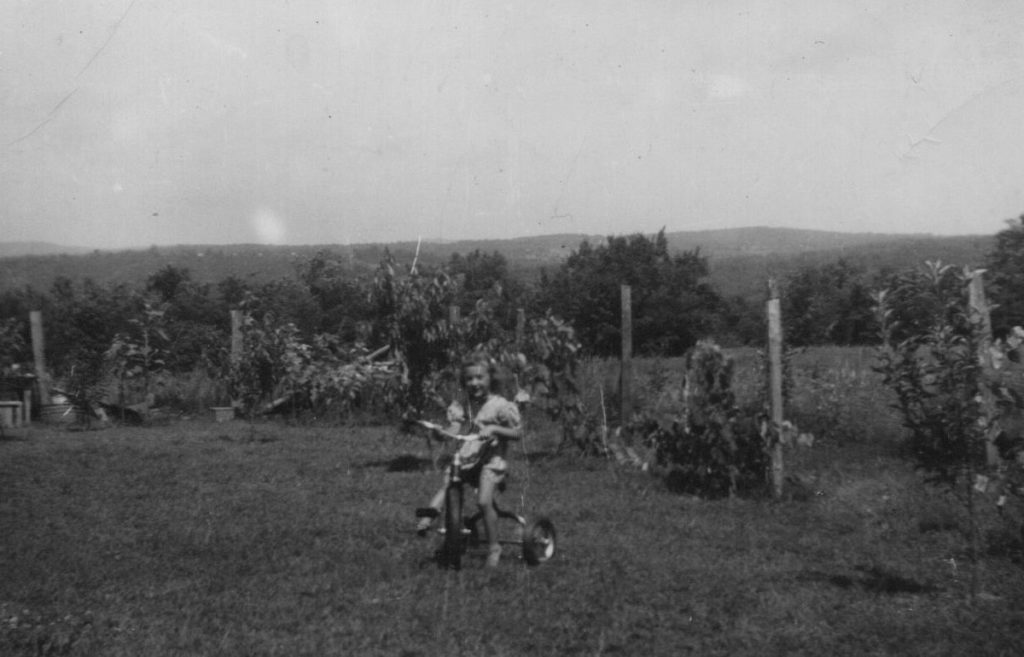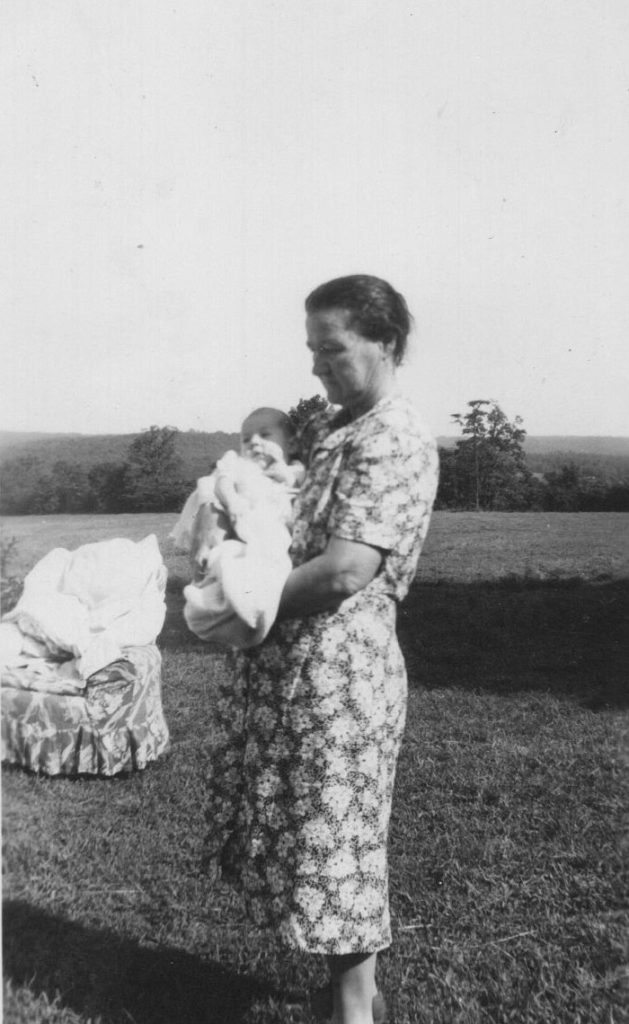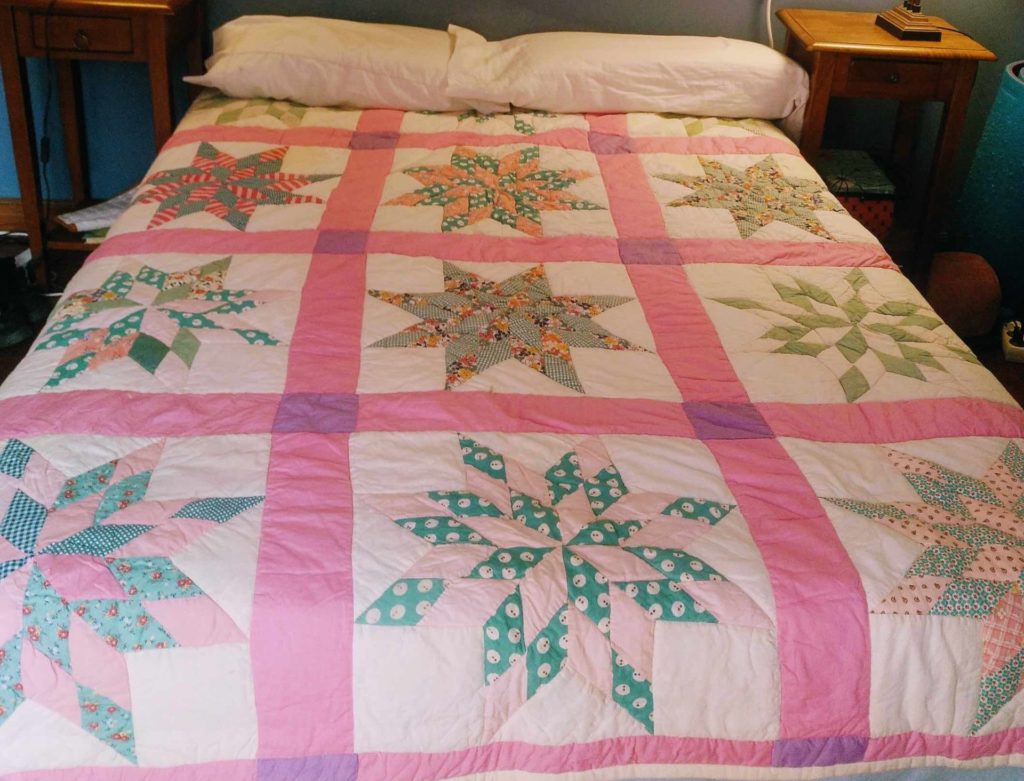There is something about living in isolation that stirs the memory of similar experiences, maybe as a way for the mind to cope or to be reassured that this, too, shall pass.
When I was seven, I spent a summer of weekdays at my grandmother’s farm while my parents were working. It was the first time I had been away from my mom and dad, even overnight, since my dad had come home from the War five years before. There were no friends to play with, and it was very quiet at night, only the occasional screech owl and the staccato buzzing of crickets. My biggest fear was not a virus too small to see without a microscope but rather all too visible angry chickens who objected when my grandmother sent me to gather the eggs out from under them. There were plenty of happy moments, too, of course, just like now, when I’m quarantined with my own family–my daughter, Spanish/Basque son-in-law, and two grandchildren.

My grandmother, my mother’s mother, lived alone. My grandfather had died two months before I was born, of a flu that turned into pneumonia, as it happened. She wasn’t one for reading or telling stories, but she provided as many new experiences for me as she could think of. There was the hayloft, for instance, in a barn inhabited only by a single cow. She tried to teach me to milk the cow, but I have always been a klutz with physical tasks, and this was no exception. I never managed to extract more than a few trickles before my grandmother took pity on the poor animal.
We went for walks, down the two-track road past an informal junkyard full of cans, bottles, and the occasional abandoned washing machine at the bottom of a hill. My grandmother sometimes stopped to look in the junkyard for anything she might salvage and fix. Following her one day, I fell and cut my knee badly. She took me home to clean and bandage it, but the scar is still faintly visible today after 70 years.
Beyond the junkyard was a lovely woods which passed through a neighbor’s property on the way to the White River. One day the neighbor, who my grandmother called “Old Man Kennedy,” threatened us with a shotgun. I was trembling, but my grandmother was undaunted. “You’d best leave that shotgun at home next time, Kennedy,”she said, “ör you’re likely to shoot yourself in the foot.” We continued undisturbed, leaving the old man to grumble impotently behind us.
The White River was a fast-moving stream, good for fishing but not so much for swimming. It rose in the Ozarks where we lived, draining and occasionally flooding the lands around it on its way to the Mississippi Delta, where it joined that much mightier waterway down to New Orleans and the Gulf of Mexico. To reach it from the woods, we had to crawl through a giant culvert under a railroad track and then onto a grassy meadow where we always stopped for a picnic and to dangle our feet in the water at the end of a small dock.
Most days, if it wasn’t raining, my grandmother spent an hour or two in her large vegetable garden, wearing a traditional Ozark sunbonnet to protect her face from sunburn. Afterward, in the cool of the evening, we would sit on her back porch by the well and peel potatoes or shell peas. Sometimes she let me draw water from the well, dropping the bucket until it clanked at the bottom, then bringing it up slowly. I still remember how cold that water was and how fresh it tasted.

She had a wood stove for cooking and an icebox instead of a refrigerator. The iceman came periodically to replenish it with fresh ice from the large commercial freezer in the nearest town.
A special treat was homemade sassafras tea, made from the roots of the small understory tree that gives root beer its flavor. We usually drank the tea hot, often at breakfast, even on those warm summer mornings. Breakfast was typical Ozark fare, eggs, bacon or sausage, and homemade biscuits with fresh butter made with my grandmother’s churn.
Another treat was the short walk up to the highway to Fee’s Grocery. In addition to all of the staples like flour and sugar, coffee and spices, along with pots, pans and other household goods, there were huge barrels full of different kinds of hard candy that we scooped out and weighed, paying a penny an ounce.
My grandmother was an accomplished seamstress, making her own clothes and mine, too, that summer, on an old foot treadle sewing machine that she kept by a window in her bedroom. Most of the clothes were made from fabric that arrived as sacks full of flour, a marketing tool by the flour company. The cotton was good quality and came in a variety of bright patterns and solid colors. At the end of the summer, before I left to go back home and to school, she presented me with a quilt made from the scraps of the clothes she had made.

“This is to remember me by,” she said.
And I still do.

Beautiful memories Glenda! Thanks for sharing.
This story makes me want to eat peaches in the shade on a hot summer’s day. That’s how sweet and delicious it is.
Thanks, Suzanna!
Thanks, Carol. Peaches in the shade is a pretty nice image, too.
Thanks, Carol. Peaches in the shade is a pretty nice image, too.
Thanks, Suzanna!
Such an atmospheric and delicate portrayal of life in the states then… Especially being British.. It brought it alive…it is most haunting. Thanks Glenda
Thanks, Georgina. Do you have any memories of what it was like in Britain after the war? Of course, by the time you were born things were probably pretty much back to normal.
Such a heart-warming and exquisite piece of writing Glenda.
Thanks, Krista!
Loved it Glenda! Thanks!